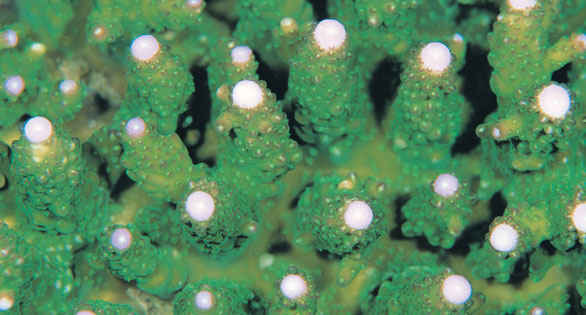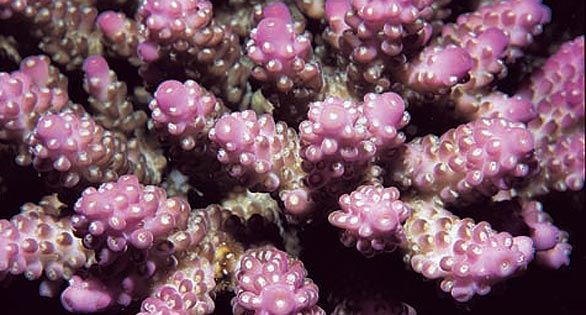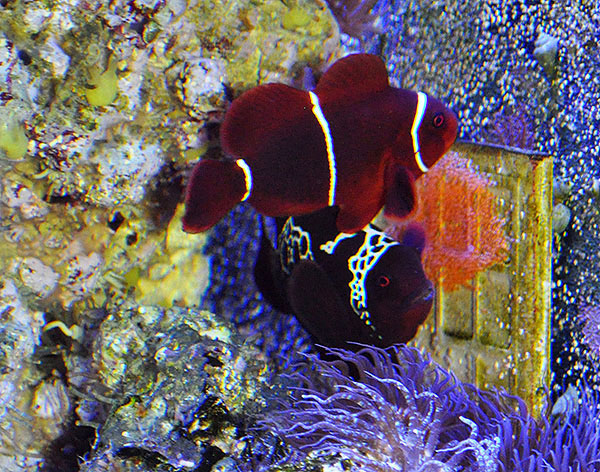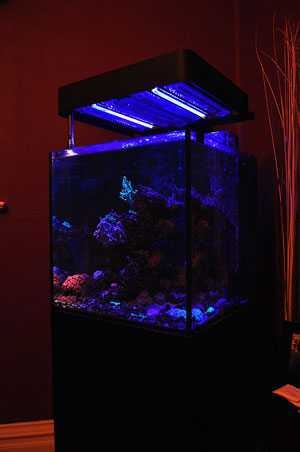Open season on marinelife collectors in the Hawaiian Islands in 2012.
By Ret Talbot
The State of Hawaii’s twenty-sixth legislature is open for business, and, dismaying to many scientists and marinelife collectors in the state, there are a total of five new measures that have been introduced seeking to ban outright or further regulate the marine aquarium trade in Hawaii.
It is anticipated that several more measures will be introduced before the cut-off date next week. In addition to the new measures, there are at least seven aquarium-related bills re-introduced automatically from last year’s session. In short, it will be a busy season for people on both sides of the marine aquarium fishery debate in Hawaii, and it has never been a more important time to be educated on the issues.
Not a Surprise
The introduction of certain measures like Senate Concurrent Resolution No. 1 (SCR 1) and Senate Resolution No. 2 (SR 2), both introduced on January 18th, is no surprise and does not indicate any documented change in the fishery.
The introduction of these two resolutions—as well as two of the other three measures introduced yesterday—was assured when Kauai attached an anti-aquarium trade resolution to its County Package in November of last year. At that time, and as reported by CORAL, Kauai passed a resolution nearly identical to Big Island’s October resolution urging the State to ban the aquarium trade. As such, both SCR 1 and SR 2 are essentially identical to the Kauai and Big Island resolutions.
At their collective heart, these resolutions claim “Hawaii’s indigenous and endemic aquatic species are being devastated by collection for aquarium purposes.”
The Hawaii Department of Land and Natural Resources (DLNR), the state agency charged with managing fisheries, disagreed with this statement when testimony was given in opposition to the Big Island resolution seeking to ban the trade last October, and they disagree with it today. DLNR maintains the data actually shows a trend toward sustainability, and while DLNR is currently working on rules packages that will further regulate both the Oahu and the West Hawaii marine aquarium fisheries, the agency contends a statewide ban is unwarranted.
“This is not devastation”
 DLNR Division of Aquatic Resources (DAR) aquatic biologist Dr. William Walsh,right, stated in testimony last October responding to the allegations of devastation, “This is not devastation.” Walsh was speaking specifically to the marine aquarium fishery in West Hawaii, which is by far the largest aquarium fishery in the State. It is also one of the most studied fisheries statewide. Walsh and his colleagues, as well as independent researchers, believe there is no credible scientific data showing a total ban on Hawaii’s marine aquarium fishery is warranted at this time. “We know a lot about what’s happening out there [in the fishery],” says Walsh, who believes whatever is ultimately decided regarding the aquarium fishery will have wider repercussions in other fisheries. “If we can’t successfully manage the aquarium fishery,” Walsh asks, “what hope is there for management of our other fisheries here in Hawaii?”
DLNR Division of Aquatic Resources (DAR) aquatic biologist Dr. William Walsh,right, stated in testimony last October responding to the allegations of devastation, “This is not devastation.” Walsh was speaking specifically to the marine aquarium fishery in West Hawaii, which is by far the largest aquarium fishery in the State. It is also one of the most studied fisheries statewide. Walsh and his colleagues, as well as independent researchers, believe there is no credible scientific data showing a total ban on Hawaii’s marine aquarium fishery is warranted at this time. “We know a lot about what’s happening out there [in the fishery],” says Walsh, who believes whatever is ultimately decided regarding the aquarium fishery will have wider repercussions in other fisheries. “If we can’t successfully manage the aquarium fishery,” Walsh asks, “what hope is there for management of our other fisheries here in Hawaii?”
Trade Opponents Cry “Unsustainable” and “Wildlife Trafficking
Of course many anti-trade activists do not believe the aquarium fishery is being managed sustainably, and they have successfully taken that message to the County Councils in the past year.
Some individuals closely watching the County Councils’ deliberation over the aquarium issue expressed surprise that, at least on Big Island, emotion and anecdotal testimony appeared to trump the State’s data, especially since the same County Council had passed a resolution “recognizing that effective management of the West Hawaii aquarium industry can be achieved through several different management approaches.”
In at least one situation, a councilmember voting in favor of the ban said he did not believe the aquarium issue was a “resource issue,” and he said he trusted the State’s data showing sustainability—yet he voted for the resolution. In the case of Kauai, current fishery data was neither solicited from the State nor presented by the State prior to the Council’s vote. A councilmember who voted in favor of Kauai’s resolution to ban the trade told CORAL at the time that there would be plenty of time to look at the data once the measure reached the Legislature.
 Nonetheless, anti-trade activists are encouraged by what they refer to as “momentum against the trade.” “By now everyone knows that coral reefs are the world’s most endangered ecosystems,” says Rene Umberger of the anti-trade group For the Fishes. “Hawaii is not a third world country needing to exploit resources, regardless of costs, and it’s time to stop acting like one. SCR 1 and various measures proposed to ban or restrict the trade are responses to this fact, as well as a simple cost-benefit analysis showing the true value of Hawaii’s coral reef wildlife.” Umberger, who interprets the data differently and who helped craft the language behind resolutions like SCR 1, believes 2012 “is going to be a very good year for the fishes.”
Nonetheless, anti-trade activists are encouraged by what they refer to as “momentum against the trade.” “By now everyone knows that coral reefs are the world’s most endangered ecosystems,” says Rene Umberger of the anti-trade group For the Fishes. “Hawaii is not a third world country needing to exploit resources, regardless of costs, and it’s time to stop acting like one. SCR 1 and various measures proposed to ban or restrict the trade are responses to this fact, as well as a simple cost-benefit analysis showing the true value of Hawaii’s coral reef wildlife.” Umberger, who interprets the data differently and who helped craft the language behind resolutions like SCR 1, believes 2012 “is going to be a very good year for the fishes.”
Some anti-trade activists are not particularly concerned with the data at all, and they simply scoff at the word sustainability used in the context of the marine aquarium fishery. “Trafficking in marine wildlife for the pet trade cannot be justified with a buzz word,” says Robert Wintner, above, longtime anti-trade activist and owner of Snorkel Bob’s, which rents snorkeling gear to tourists. Wintner claims “sustainability is as nebulous as ‘virtue’ at a debutante ball.”
His argument against the trade, while at times referencing data, is most accurately a moral and ethical argument against keeping animals in aquaria. As such, he not only refuses to discuss sustainable aquarium fisheries, but he also rebuffs “the ‘f’ word” altogether.
“A Lot of Frustration”
While there isn’t a lot of surprise over the newly introduced measures, fisheries managers, fishers and others who support sustainable fisheries in Hawaii, express a lot of frustration. “These attacks on the trade originate from a small group of people on Maui and ignore the facts, process and common sense,” one exacerbated fisher said yesterday when asked about the new measures. “I’m not surprised, but it’s very disheartening.”
S CR 1 and SR 2 were both introduced by Senate President Shan Tsutsui, right, who is a Maui legislator, and Maui has indeed been the de facto epicenter of the anti-trade movement in Hawaii. In part, this is because Maui is the home of the aforementioned Wintner and Umberger.
CR 1 and SR 2 were both introduced by Senate President Shan Tsutsui, right, who is a Maui legislator, and Maui has indeed been the de facto epicenter of the anti-trade movement in Hawaii. In part, this is because Maui is the home of the aforementioned Wintner and Umberger.
Most recently, Maui has been the site of a series of increasingly larger anti-trade protests against Petco and the chain’s sale of marine aquarium fishes. While the degradation of Maui’s reefs is an important issue desperately needing to be addressed, it’s quite clear the aquarium fishery is amongst the least of the stressors causing damage to the Island’s reefs. In fact, when it comes to the marine aquarium fishery, Maui is almost irrelevant.
According to state records, only three aquarium fishers harvested a total of just over 2,000 fishes in Maui’s waters in FY 2011. More than 40 times as many reef fishes were harvested from Maui’s other, non-aquarium related fisheries. Unlike aquarium fishers, who most often target younger fishes, food fishers typically target the larger breeding portion of the population, further compounding their impact.
This selective targeting of one fishery over another worries fisheries managers, and, as one person commented, “stinks of politics and special interest.”
Even in the case of West Hawaii, where the most aquarium fishes are harvested for the trade, the almost completely unregulated recreational fishery is as large, if not larger, than the marine aquarium fishery. “It makes little biological sense for such legislation to exclusively target aquarium collecting while totally ignoring other harvesting impacts,” says Walsh.
Below: Convict Surgeonfish School grazes a Hawaiian reef. This species is largely avoided by aquarium collectors because it is a popular food fish there, known as manini. Those in the aquarium trade come from elsewhere in the Indo-Pacific.
A Collector Speaks: “Wrong Facts” Being Used
Internationally respected rare fish collector Tony Nahacky has been fishing for aquarium fishes in Hawaii for about as long as anyone. By extension, he has a better long-range view of the debate surrounding Hawaii’s marine aquarium fishery than most. Nahacky is frustrated by this new round of measures.
“I have not reviewed all the bills being introduced in the current Hawaii Legislative Session,” Nahacky tells CORAL, “but of the bills I have reviewed they sadly have their facts wrong concerning the aquarium fishery in Hawaii.”
 Nahacky, right, points to numerous inaccuracies, misused facts and blatant untruths in a number of the bills he has read. He points, for example, to SCR 1, which states emphatically: “endemic species, occurring nowhere else in the world and contributing to Hawaii’s natural legacy, are threatened with extinction by collection for aquarium purposes.”
Nahacky, right, points to numerous inaccuracies, misused facts and blatant untruths in a number of the bills he has read. He points, for example, to SCR 1, which states emphatically: “endemic species, occurring nowhere else in the world and contributing to Hawaii’s natural legacy, are threatened with extinction by collection for aquarium purposes.”
Nahacky says there is no data to support any aquarium fishes in Hawaii are threatened with extinction. “The Convention for the Trade in Endangered Species (CITES), which the U.S.A. is party to, have not listed any Hawaiian marine aquarium fish as being endangered,” Nahacky says.
“Unfortunately, little to no due diligence was undertaken to provide accurate and verifiable statements concerning the aquarium fishery in Hawaii and particularly in West Hawaii, which is,” Nahacky points out, “considered a model for developing aquarium fisheries in other parts of the world.”
Four of the five aquarium-related measures introduced yesterday are a direct result of a vote occurring on the island of Kauai—an island with virtually no aquarium fishery to speak of. The vote on Kauai followed testimony that was one hundred percent in support of the ban and organized by anti-trade activists from Maui. No data or opinion from the state agency charged with both monitoring and managing the State’s fisheries was solicited prior to the vote, although councilmembers did cite data more than ten years old as influencing their votes.
The Kauai Council, which voted in favor of a statewide ban on the aquarium trade and caused these measures to be introduced as part of Hawaii’s 2012 Legislative Session, introduced no similar bill expressing concern about any other fishery despite the fact that on Kauai the non-aquarium reef fish harvest was 400 times that taken by the two aquarium fishers working in island waters.
Over the coming week, several additional aquarium-related measures will no doubt be introduced. It will be important for all interested parties to read and do their best to understand each measure. CORAL will continue to report on the new measures, and, where appropriate, give people an opportunity to become involved.

 “It is unclear that there would be any legal way to provide exceptions or grandfather in past legal ownership or propagation. Could your next “20,000 Leagues Lokani” frag be your last, or worse, do you have to grind your entire Candy Cane Coral colony into a pulp or risk jail time or fines for owning it, despite having purchased it legally years prior?
“It is unclear that there would be any legal way to provide exceptions or grandfather in past legal ownership or propagation. Could your next “20,000 Leagues Lokani” frag be your last, or worse, do you have to grind your entire Candy Cane Coral colony into a pulp or risk jail time or fines for owning it, despite having purchased it legally years prior?








 Remembering Bill Addison:
Remembering Bill Addison: 
 DLNR Division of Aquatic Resources (DAR) aquatic biologist Dr. William Walsh,right, stated in testimony last October responding to the allegations of devastation, “This is not devastation.” Walsh was speaking specifically to the marine aquarium fishery in West Hawaii, which is by far the largest aquarium fishery in the State. It is also one of the most studied fisheries statewide. Walsh and his colleagues, as well as independent researchers, believe there is no credible scientific data showing a total ban on Hawaii’s marine aquarium fishery is warranted at this time. “We know a lot about what’s happening out there [in the fishery],” says Walsh, who believes whatever is ultimately decided regarding the aquarium fishery will have wider repercussions in other fisheries. “If we can’t successfully manage the aquarium fishery,” Walsh asks, “what hope is there for management of our other fisheries here in Hawaii?”
DLNR Division of Aquatic Resources (DAR) aquatic biologist Dr. William Walsh,right, stated in testimony last October responding to the allegations of devastation, “This is not devastation.” Walsh was speaking specifically to the marine aquarium fishery in West Hawaii, which is by far the largest aquarium fishery in the State. It is also one of the most studied fisheries statewide. Walsh and his colleagues, as well as independent researchers, believe there is no credible scientific data showing a total ban on Hawaii’s marine aquarium fishery is warranted at this time. “We know a lot about what’s happening out there [in the fishery],” says Walsh, who believes whatever is ultimately decided regarding the aquarium fishery will have wider repercussions in other fisheries. “If we can’t successfully manage the aquarium fishery,” Walsh asks, “what hope is there for management of our other fisheries here in Hawaii?” Nonetheless, anti-trade activists are encouraged by what they refer to as “momentum against the trade.” “By now everyone knows that coral reefs are the world’s most endangered ecosystems,” says Rene Umberger of the anti-trade group For the Fishes. “Hawaii is not a third world country needing to exploit resources, regardless of costs, and it’s time to stop acting like one. SCR 1 and various measures proposed to ban or restrict the trade are responses to this fact, as well as a simple cost-benefit analysis showing the true value of Hawaii’s coral reef wildlife.” Umberger, who interprets the data differently and who helped craft the language behind resolutions like SCR 1, believes 2012 “is going to be a very good year for the fishes.”
Nonetheless, anti-trade activists are encouraged by what they refer to as “momentum against the trade.” “By now everyone knows that coral reefs are the world’s most endangered ecosystems,” says Rene Umberger of the anti-trade group For the Fishes. “Hawaii is not a third world country needing to exploit resources, regardless of costs, and it’s time to stop acting like one. SCR 1 and various measures proposed to ban or restrict the trade are responses to this fact, as well as a simple cost-benefit analysis showing the true value of Hawaii’s coral reef wildlife.” Umberger, who interprets the data differently and who helped craft the language behind resolutions like SCR 1, believes 2012 “is going to be a very good year for the fishes.” CR 1 and SR 2 were both introduced by Senate President Shan Tsutsui, right, who is a Maui legislator, and Maui has indeed been the de facto epicenter of the anti-trade movement in Hawaii. In part, this is because Maui is the home of the aforementioned Wintner and Umberger.
CR 1 and SR 2 were both introduced by Senate President Shan Tsutsui, right, who is a Maui legislator, and Maui has indeed been the de facto epicenter of the anti-trade movement in Hawaii. In part, this is because Maui is the home of the aforementioned Wintner and Umberger.
